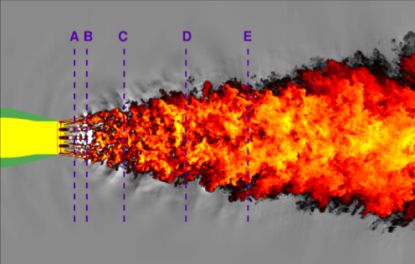
 High Fidelity numerical simulations of multiple-physics turbulent flows in complex geometries
High Fidelity numerical simulations of multiple-physics turbulent flows in complex geometries
Parviz Moin
STANFORD UNIVERSITY – CA, USA
Curriculum
Moin is the founding director of the Center for Turbulence Research at Stanford and Ames. Established in 1987 as a research consortium between NASA and Stanford, Center for Turbulence Research is devoted to fundamental studies of turbulent flows. Center of Turbulence Research is widely recognized as the international focal point for turbulence research, attracting diverse groups of researchers from engineering, mathematics and physics.
Professor Moin pioneered the use of direct and Large Eddy Simulation techniques for the study of turbulence physics, control and modeling concepts and has written widely on the structure of turbulent shear flows. His current interests include: interaction of turbulent flows and shock waves, aerodynamic noise and hydro-acoustics, aerooptics, combustion, numerical analysis, turbulence control, large eddy simulation and parallel computing. He is a Co-Editor of the Annual Review of Fluid Mechanics and Associate Editor of Physics of Fluids, Journal of Computational Physics, and on the Editorial Board of Turbulent Combustion and the SIAM Journal of Multiscale Modeling and Simulation. He is currently serving on the Naval Research Advisory Committee (NRAC).
Abstract
The effectiveness of the Reynolds averaged approach for CFD has reached a plateau and the accuracy of its predictions does not improve with increased computer power. In contrast large eddy simulation, LES, is rooted in first principles and its accuracy increases with increased computer power. A review of modern LES for numerical simulation of multi-physics turbulent flows will be presented. Applications range from prediction of supersonic jet noise, combustion in realistic gas turbine engines and separation control on airfoils. It is demonstrated that in boundary layers the dynamic subgrid scale modeling procedure predicts the location of transition from laminar to turbulent flow irrespective of the path to transition. This is a major weakness of the RANS approach and constant coefficient eddy viscosity models. Development of wall models for LES of high Reynolds number boundary layers, and subgrid scale models for muti-physics phenomena where the dynamics of thin interfaces are critical to the development of large scale flow remains a pacing item for LES.
I will emphasize the critical importance of numerical methods used for LES.
Methods with low numerical dissipation and dispersion are essential for credible LES computations. Numerical dissipation present in most RANS codes is inadequate for LES, and special consideration must be given to construct low dissipation and dispersion error schemes for calculation of turbulent flows in complex geometries.
In the absence of numerical dissipation, robustness is achieved by enforcing higher order discrete conservation principles which is a bit challenging in unstructured mesh settings. Future outlook for computer architectures and routine use of LES in industrial settings will be discussed.

